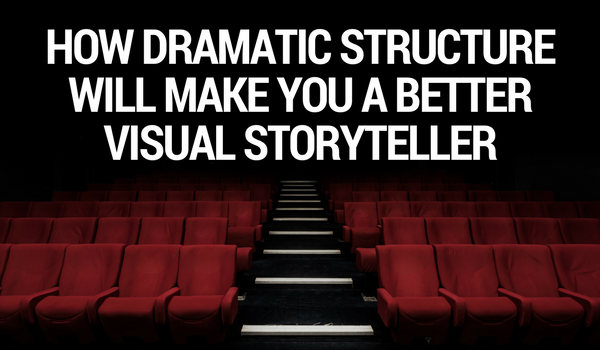
Even if you don’t consider yourself a writer or much of a reader, you likely instinctively know what dramatic structure is. Made popular by Freytag’s Pyramid, dramatic structure argues that there are five main components to any narrative or story told: exposition, rising action, climax, falling action, and resolution. This rough outline is not only used in written works like novels, but is also in movies to move the plot along. In the same way, marketers can employ dramatic structure to improve the quality of visual storytelling. Here are ways to use Freytag’s Pyramid throughout common visual tactics.
Video
Video is probably the easiest of these four tactics to understand how dramatic structure can be used to tell a visual story because we see it all the time in movies and TV shows. In a superhero movie, for instance, the story starts with an explanation of the origin of the hero (exposition), then moves to show how they become acclimated to their powers and introduces their adversary (rising action), which eventually leads to the ultimate showdown between the hero and the villain (climax), where the villain is defeated and people congratulate the hero (falling action), and there is a sense that all is right with the world (resolution).
In videos used for marketing a company, product, or service, the dramatic structure outline should be used as a general guide for the audience, even if the video isn’t strictly telling a story like the superhero movie above. Take the viral video for Dollar Shave Club and see how it used a vague outline of dramatic structure for its first commercial: the video starts by explaining what the company is and what they do, then moves on to explain the benefits of buying the product, then says how Dollar Shave Club is better than their competitors, and ends by repeating the value proposition, and, as the cherry on top of the resolution, celebrates with a party.
Making sure to include at least the bare bones of dramatic structure—who you are, why they should buy from you, and how they can do that—in a purely marketing video is key to getting your audience invested in the content. When creating a testimonial video (like Saroo Brierley’s Google Earth video) or other types of videos that lend themselves more to a narrative structure, employing Freytag’s Pyramid should be considered a priority. The less the audience has to interpret and can easily escape into a structure they understand, the easier it will be to focus on the content of the video, and, consequently, your company.
Images
They say a picture is worth a thousand words. If that’s true, an image can tell a short story all by itself. But before you try to use one image to substitute for an entire blog post, think about the images you use as the header images in a blog post or as background on your website. Do they contribute to the overall story your company and brand are telling or are they only there to fulfill a best practice quota?
The images you chose should contribute in some way to the story. If it’s a blog post header image, it should be relevant and enticing, setting the groundwork for what the reader should expect—in other words, the exposition. If it’s a graphic CTA button at the end of the post, it should also be related to the content, but act more as the resolution: the only logical thing left to do is click on the button. Thinking of images as contributing to—and not separate from—the story you’re telling will improve the connection your audience has with your content.
Infographics
Infographics shouldn’t just be a compilation of statistics, data, and cutesy iconography—it should tell a story through its visual and written elements. More often than not, an infographic is more an expository essay (explaining a concept or describing a situation through data) than a straight narrative story, but that doesn’t mean that dramatic structure can’t be applied.
Be purposeful with the organization of the content on the page—consider how the facts and data can best tell a story. What does the audience need to first understand (rising action) to then grasp the point you’re trying to convey (the climax)? Then use visual elements to lead the viewer through the infographic—some infographics use the motif of a road or use arrows to guide from one fact to the next, but the visual elements can also be more subtle, like using increasingly darker shades of color to naturally lead the eye down the page.
Using dramatic structure in the visual components of a digital marketing strategy can greatly improve the comprehension of your audience. Humans are drawn to stories and can easily identify the parts of the story, even if they don’t know about Freytag. Utilizing this basic, universal understanding can connect your audience on a more intimate level to your company. Take advantage of the opportunity to tell your story not only with words but also with the videos, images, and infographics your company produces.
{{cta(‘ba56ca01-8b2a-4845-926a-06bd5840fda4’)}}
